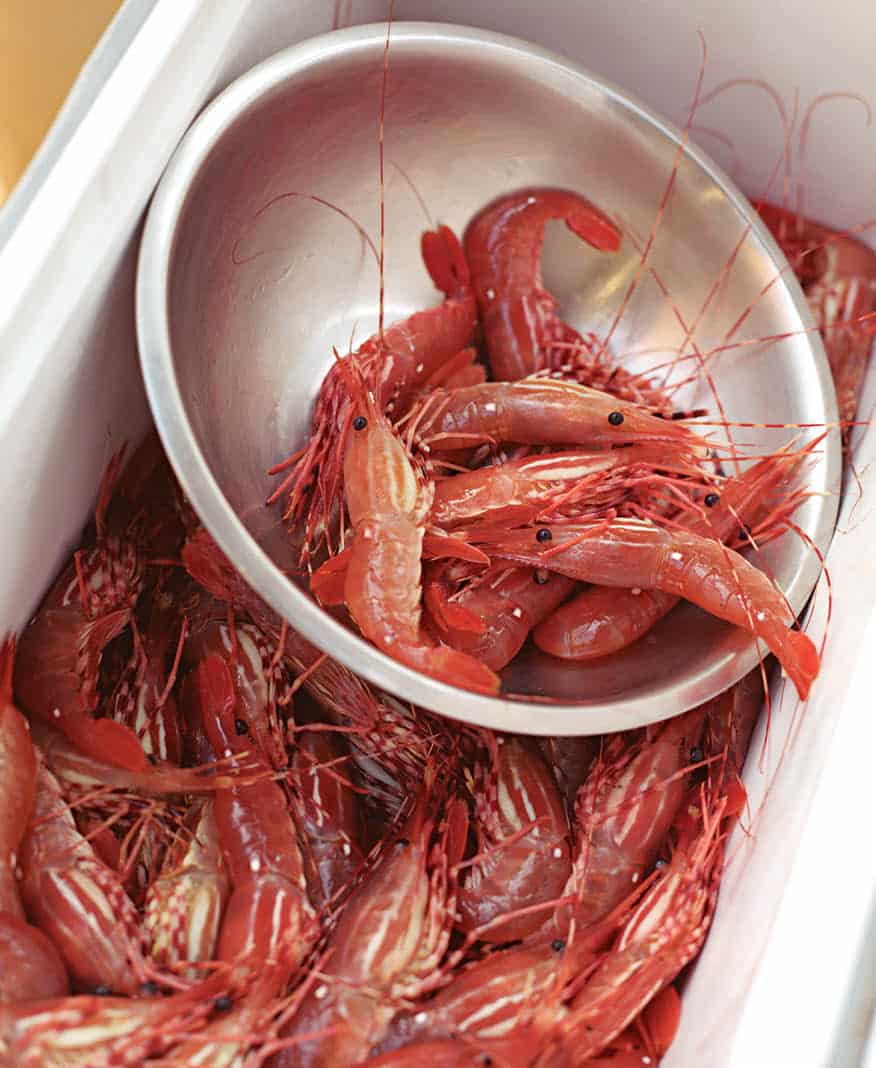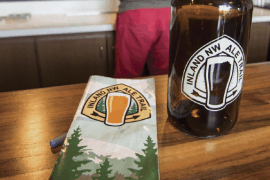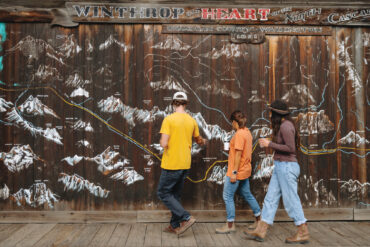written by Corinne Whiting
If there’s one Washingtonian who knows his spot prawns, it’s Riley Starks. Named for the four spots that bespeckle their bodies (two on the head, two on the tails), spot prawns are a delicacy with very short lifespans. “They’re really amazing live,” Starks said. “They’re very ephemeral and don’t keep like normal shrimp.”
If you treat them right, he explained—keeping the prawns in water that’s around 34 degrees (with adequate circulation, salinity and aeration)—they can last for about two weeks. This makes eating spot prawns all the more special, and a coveted Pacific Northwest tradition that begins around early May. “Spot prawns are the highest quality and value of any prawn you can find on the market,” Starks said.
When Starks owned the present iteration of the lauded Willows Inn from 2001 to 2013, he took great pleasure in hosting spot prawn gatherings on the deck every Sunday. These events

through August, thanks to the restaurant’s 300-gallon insulated tote tank that had a commercial filtering system for seawater.
After replenishing its stock every week, the Willows team would sauté the prawns with chopped garlic, allowing guests to enjoy them al fresco alongside “killer margaritas.” Stark’s loyal patrons reminisce about those beloved feasts to this day.
These days, Starks sells spot prawns through Lummi Island Wild, a co-op that supports reefnet fishing and remains one of the ten most sustainable fisheries in the world. A commercial fisherman for forty-five years, Starks helped start Lummi Island Wild after moving to the island in 1992. He now enjoys his role as marketing manager of the business, which employs eco-friendly reefnet fishing practices, an historic Pacific Northwest method once used throughout the Salish Sea by its many indigenous peoples.
In addition to its variety of salmon offerings, Lummi Island Wild sells products ranging from Alaskan weathervane scallops and sablefish (black cod) steaks to 1-pound packages of frozen spot prawns. Lummi Island Wild buys its spot prawns live and exclusively from tribal fishermen of the Salish Sea, who are the first permitted into the waters every April, before sport and commercial fishermen get access.
Spot prawns are hermaphroditic, meaning they start life as males and later transition to females. When in perfect condition, they should have a green hue that’s a bit translucent. The prawns turn red when they are stressed, and this serves as a danger sign. First, the heads turn black, sending enzymes to the rest of the body that renders that meat soft, mushy and inedible. Despite the challenges of having to navigate this narrow window, Starks explained, “Spot prawns are significantly better than any other prawn you can find on
the market.”
Lummi Island Wild sources an array of buying clubs, restaurants and regional resorts (like Semiahmoo and Cedarbrook Lodge’s Copperleaf Restaurant). It also has what it calls a “win-win” relationship with Puget Sound Food Hub (PSFH), an innovative farmer-owned cooperative—or a “digital farmers market” that connects Western Washington farmers with wholesale buyers online.” They’ve been a lifesaver to us in many ways,” Starks said, “and I think we’ve been a lifesaver to them, too.”
In yet another endeavor, Starks recently launched a nonprofit called The Salish Center for Sustainable Fishing Methods. Two of the organization’s aims, he said, are to “give recognition to what it is that is harvested in the Salish Sea” as well as to realize the importance of cherishing and protecting this natural wonder.
When it comes to preparing and serving spot prawns, it’s a fine art. “The key to spot prawns is to not overcook them,” said Mitch Mayers, executive chef and owner of Ballard’s Sawyer restaurant. “They cook exceptionally fast.” In the summer months, he deems a simple and light French stew the best way to show off the prawns and their distinctive sweet flavor.
At Willows, Starks also used to organize popular wine dinners, and he recalls one in particular that featured Portland chef Vitaly Paley. “A lot of chefs don’t get the chance to work with live prawns and don’t know what to do with them,” Starks said. Paley, however, knew just what to do. After heating salt mixed with aromatics and a little oil in a 600-degree woodstove oven, Paley poured the hot salt over a bowl of live prawns. The end result? ”Absolutely the best spot prawns I’ve ever had in my life,” Starks said. On that note, we’re adding these local treasures to the list of items our palate anticipates in the months to come.







